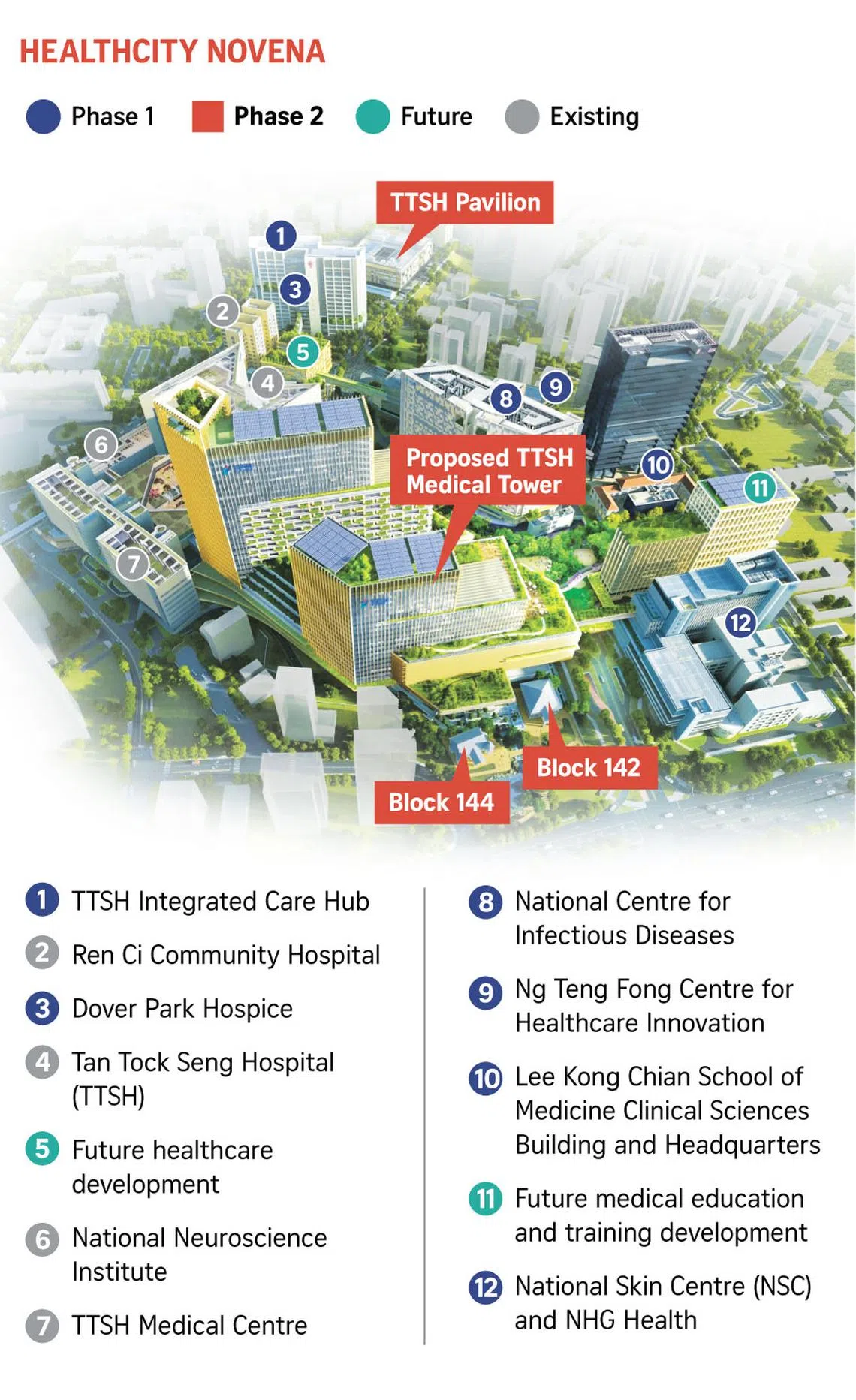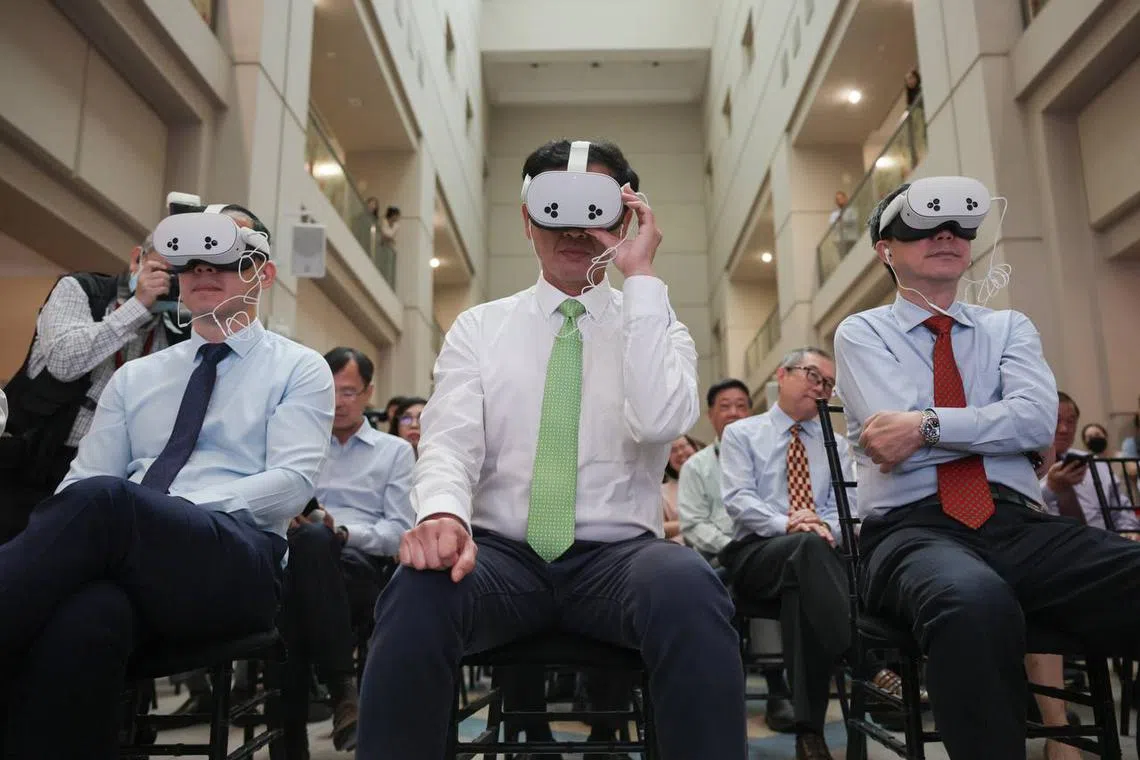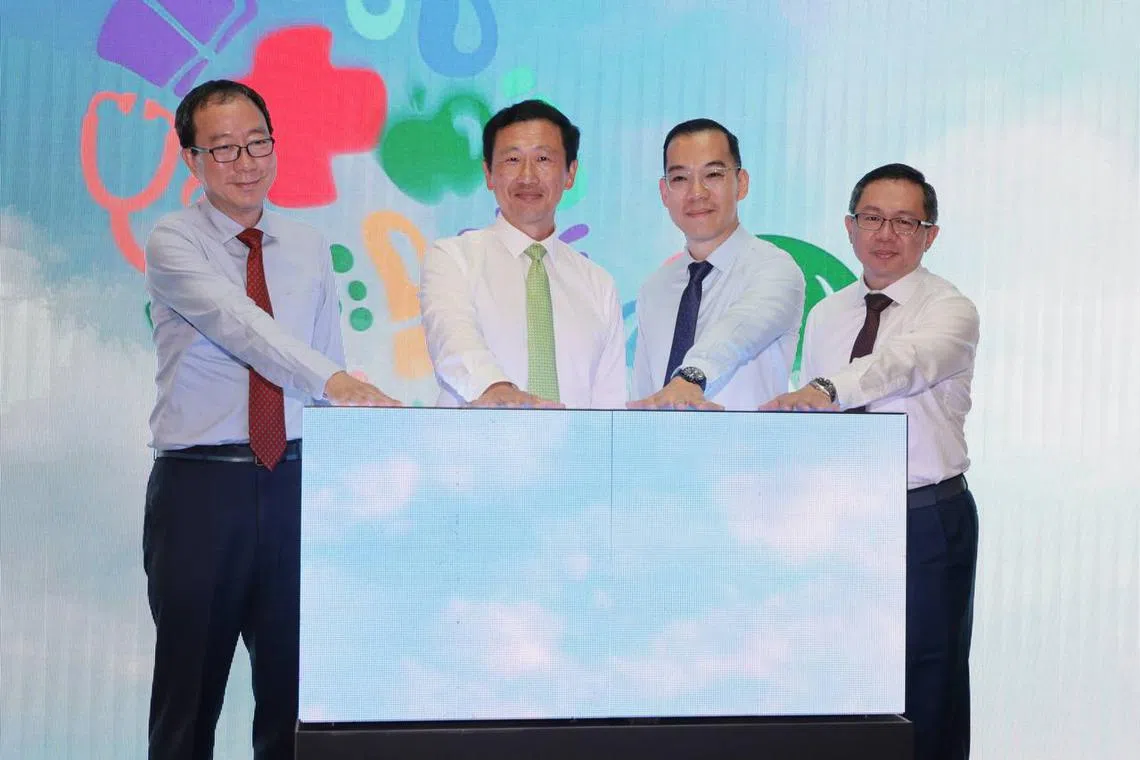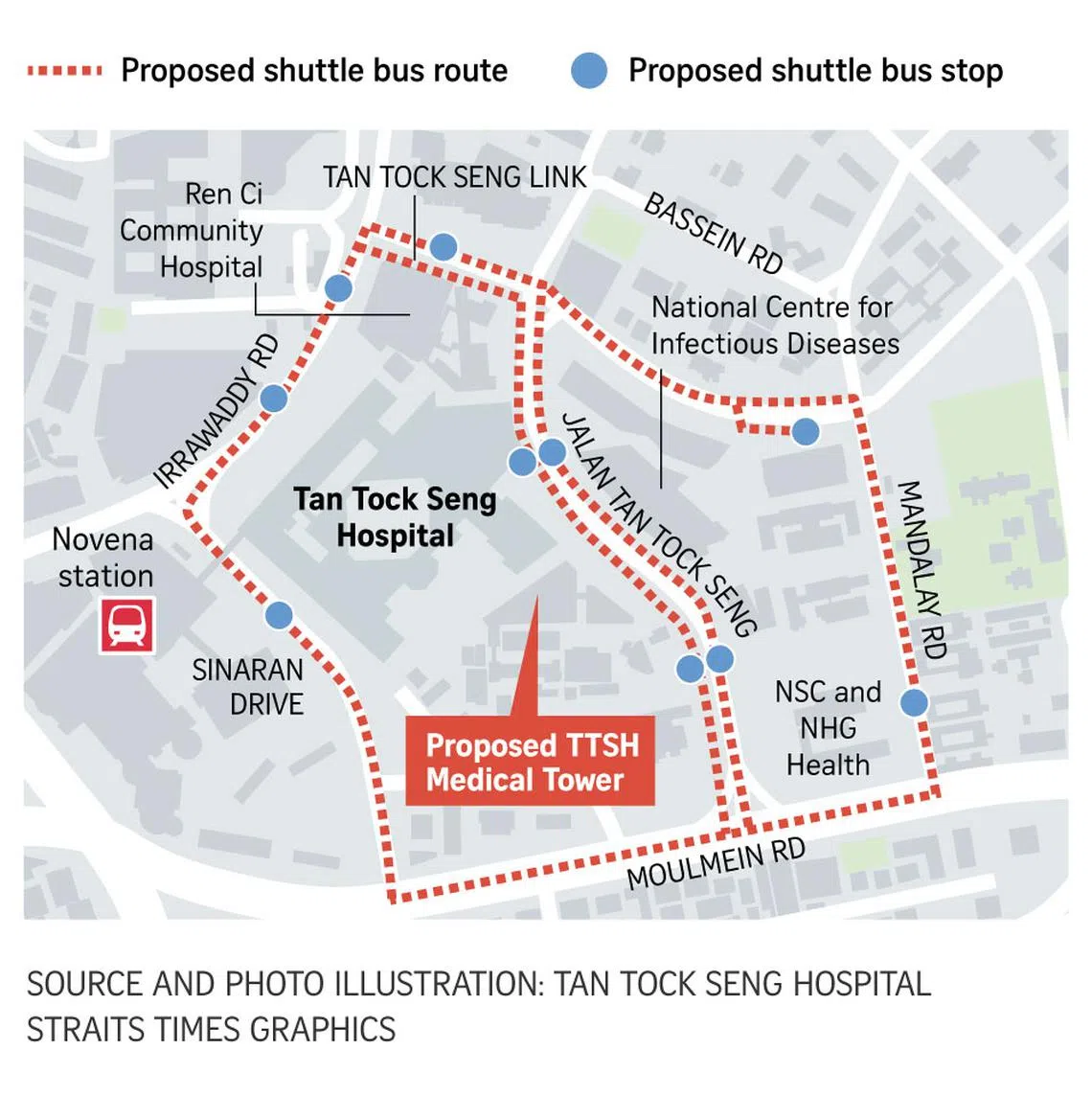New TTSH Medical Tower to house about 600 acute beds, bigger emergency department
Sign up now: Get ST's newsletters delivered to your inbox

Tan Tock Seng Hospital chief executive Tang Kong Choong (left), Health Minister Ong Ye Kung (centre) and Development Office at NHG Health director Chan Chee Chuen at the unveiling of the second phase of the HealthCity Novena Master Plan on Sept 9.
ST PHOTO: GIN TAY
Follow topic:
- TTSH Medical Tower is set to add about 600 acute beds and a larger emergency department to improve specialist care access.
- Phase Two of HealthCity Novena will enhance patient flow and reduce wait times, building on Phase One's achievements.
- TTSH's expanded ED will cater to a growing ageing population, with improved triage and care coordination.
AI generated
SINGAPORE – Tan Tock Seng Hospital (TTSH) is set to add about 600 acute beds and have a bigger emergency department (ED) under a plan to develop the former Communicable Disease Centre 2 and Annex 2 buildings into a medical tower.
The project will give patients faster access to specialist and intensive care for severe, complex or life-threatening medical conditions across the integrated network of public healthcare cluster NHG Health.
With shorter waiting times, patients can move seamlessly between primary, tertiary and community care.
The TTSH Medical Tower marks the second phase of the HealthCity Novena Master Plan, and was launched on Sept 9.
Speaking at the unveiling of the new phase at TTSH, Minister for Health Ong Ye Kung said: “As the Singapore population grows older and the healthcare needs of our population become more complex, we need more than just a refresh of ageing facilities. (We need) a major revamp and re-imagining of their value and offerings.”
Mr Ong, who is also Coordinating Minister for Social Policies, said the new phase will build on the achievements of phase one, which was completed in 2024.
“Phase two will introduce new healthcare facilities and enhance capacity through innovation of processes and better patient flow management,” he said.
Helmed by TTSH, the development marks a crucial step in NHG Health’s road map to strengthen its healthcare capacity, advance frailty-ready care, improve access to medical intervention and improve clinical care outcomes for the 1.5 million residents of central and north Singapore.
Mr Ong said the TTSH Medical Tower “will be designed for greater efficiency, with streamlined care pathways, more targeted treatments and faster recoveries”.

The site at which the new TTSH Medical Tower will be developed.
ST PHOTO: GIN TAY
The former Communicable Disease Centre 2 and Annex 2 buildings in Jalan Tan Tock Seng comprise five six-storey blocks which were built in the 1950s as general wards, and converted into a severe acute respiratory syndrome, or Sars, wing in 2003.
Mr Ong said the TTSH campus has “gone through many rounds of upgrading and refurbishment”.
Over the past 10 years, NHG Health, which includes TTSH, has progressively expanded its infrastructure and clinical capabilities to meet the population’s diverse and growing needs, including embarking on the HealthCity Novena Master Plan.
Started in 2013, the project aims to transform the 17ha Novena campus into an integrated hub that supports new care models, boosts pandemic preparedness, advances medical education and research, and stays connected to the community.
Under the first phase between 2017 and 2024, five developments were completed.
They were the Lee Kong Chian School of Medicine’s Clinical Sciences Building, the Ng Teng Fong Centre for Healthcare Innovation, the National Centre for Infectious Diseases, the National Skin Centre, and the TTSH Integrated Care Hub, which includes Dover Park Hospice.
TTSH chief executive Tang Kong Choong said building more of the same will not be enough.
“We will be designing smart and thoughtful capacity that will anticipate and address challenges of a greying population, support the workforce and improve healthcare outcomes,” he added.

Expanding emergency care for ageing population
As one of Singapore’s busiest emergency care providers, TTSH serves as a critical first responder for diverse medical and national emergencies.
Over the past three years, its ED has managed more than 125,000 cases annually.
Surrounded by mature housing estates, TTSH serves a population with a higher-than-national-average proportion of seniors. In 2023, its admission rate for inpatients aged 65 and above was 1.5 times that of the national rate for men and 2.2 times for women.

Health Minister Ong Ye Kung (centre) watching the virtual reality simulation of the proposed medical tower at the unveiling of the second phase of the HealthCity Novena Master Plan.
ST PHOTO: GIN TAY
In 2024, about two in five (40 per cent) emergency patients were aged 65 and above – an increase from about three in 10 (30 per cent) five years ago.
TTSH plans to relocate its ED to the proposed TTSH Medical Tower and expand it to make room for the high volume of emergency attendances, particularly of older adults.
It is also reviewing workflows at the new ED to allow faster triage and care coordination, minimise unnecessary patient transfers – such as by sending urgent but non-critical cases directly to operating theatres for swift intervention – and allow patients to be discharged after a short period of monitoring, without the need for admission.
Adjunct Professor Tang said: “What is more pertinent is that we are taking this opportunity to reshape and improve how care will be delivered to our residents and patients. I envisage care to be more convenient, coordinated, connected and compassionate for patients and their families.”
Demand for TTSH’s services has grown significantly in recent years. Between 2020 and 2024, admissions and outpatient visits increased by an average of 5 per cent annually, while surgical procedures grew by about 10 per cent each year.

Health Minister Ong Ye Kung (second from left) at the unveiling of the second phase of the HealthCity Novena Master Plan on Sept 9.
ST PHOTO: GIN TAY
In 2024, more than 100,000 procedures were performed at the hospital.
This demand is projected to rise with Singapore’s rapidly ageing population and increasing prevalence of chronic diseases.
To meet this demand, TTSH will expand its Enhanced Recovery After Surgery (Eras) protocols to promote faster and safer recovery, and reduce length of stay.
The wards of the new medical tower will have more Eras-trained clinical teams and recovery-focused design elements, such as early mobilisation areas where patients undergo rehabilitation.
Group chief executive of NHG Health Joe Sim said phase two of HealthCity Novena marks a significant milestone for the cluster as it will address current and future healthcare needs.
“It reflects our commitment to redesign care that is sustainable, efficient and centred on the needs of our patients,” he said.
“Faster access to care, enhanced recovery models and innovations within the hospital will complement our efforts to anchor care in the community, working closely with general practitioners, polyclinics and community care partners in our region.”



